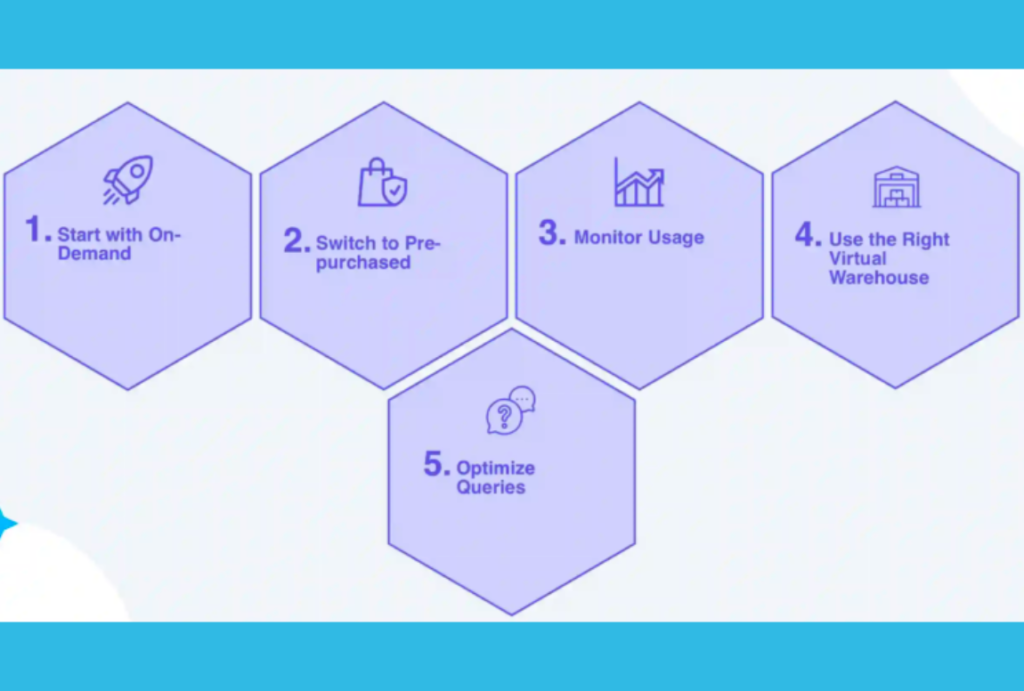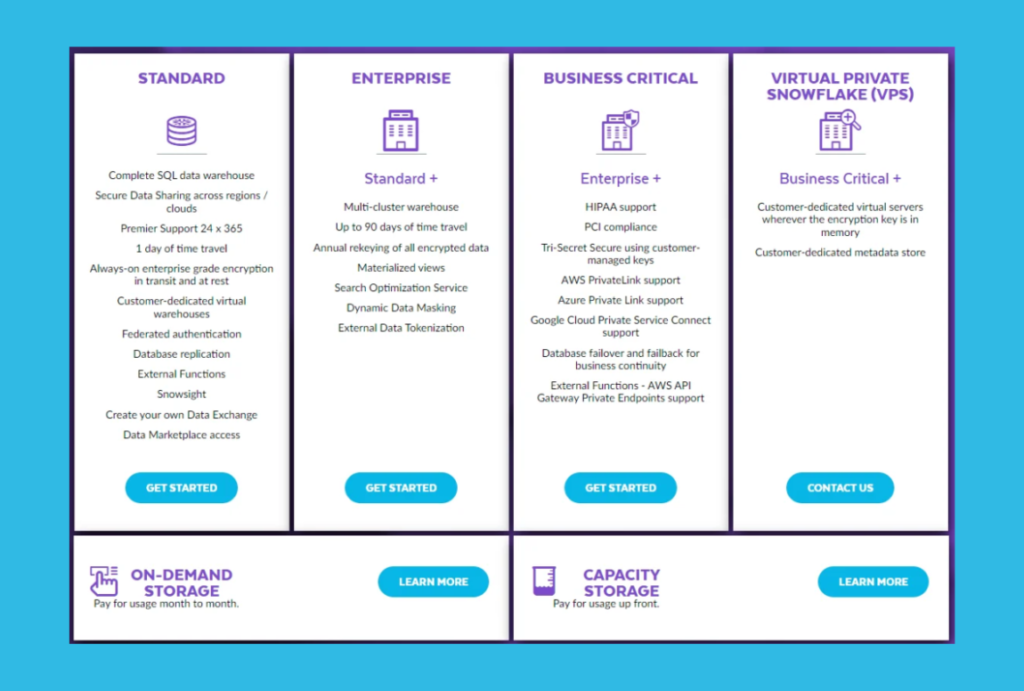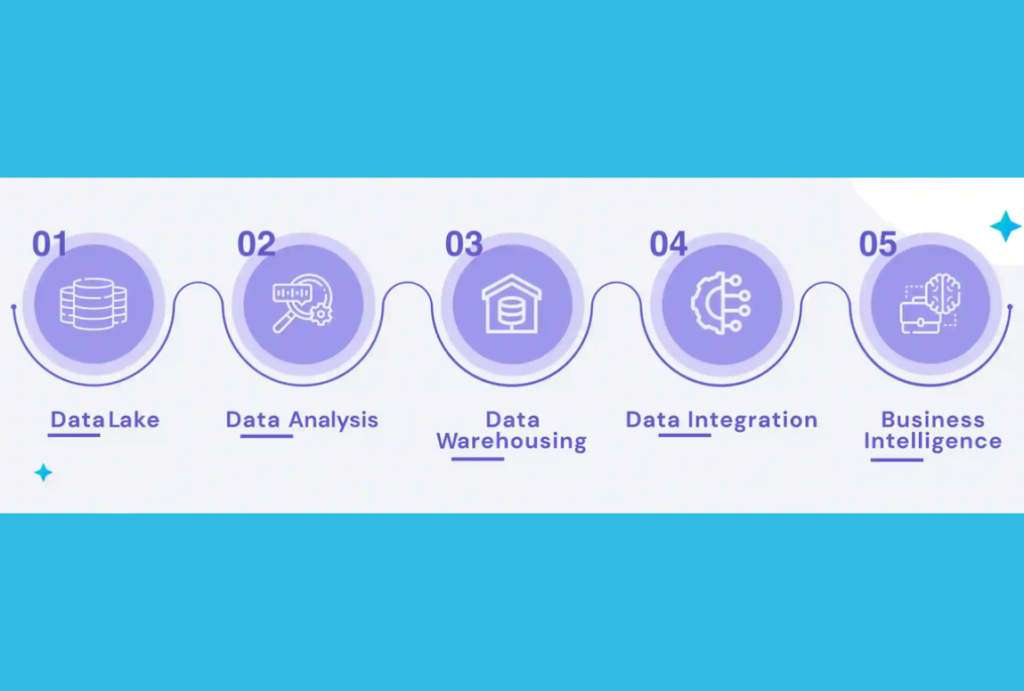
Table of Contents
Overview
Snowflake is a cloud-based data warehousing solution that stands out for its flexible and transparent pricing model. In this comprehensive analysis, we will explore the structure of Snowflake’s pricing, highlighting its unique features and comparing it to other leading cloud data warehousing solutions.
Benefits of Snowflake’s Pricing
Snowflake’s pricing model offers several advantages for users, including:
- Pay for Actual Usage:
Users have the ability to pay based on the actual consumption of resources, ensuring cost efficiency. - Flexibility in Payment Plans:
Snowflake provides a range of payment plans, allowing users to choose between On-Demand and Pre-Purchase options. - Seamless Scaling Based on Requirements:
Users can easily scale their data storage, compute, and cloud services usage up or down, aligning with specific business needs and workloads.
Overall, its structure offers users the flexibility and transparency they need to effectively manage their data warehousing costs.
Understand and control Snowflake Costs

1. Start with On-Demand
If you’re new to Snowflake, the best way to begin is by using On-Demand. This option lets you pay for exactly what you use, without any upfront expenses or long-term obligations. It’s a great way to keep track of your usage and costs for a few months before considering a switch to Pre-Purchased, once you have a better understanding of your resource requirements.
2. Switch to pre-purchased
Snowflake Pre-Purchased offers a budget-friendly option for extended usage. By allowing you to buy computing and storage resources ahead of time, it helps you save on costs per usage compared to the On-Demand option.
3. Monitor usage
To effectively manage your costs, it’s important to keep an eye on your usage. Snowflake offers a resource monitor that can assist you in tracking your usage and costs. If you’re looking for a more extensive solution, there are also third-party tools available to help you calculate your expenses.
4. Use the right virtual warehouse
İt’s virtual warehouses enable you to allocate the perfect computing resources for your queries, ensuring cost control. By selecting the appropriate virtual warehouse size and concurrency, you can prevent over-provisioning and effectively save money.
How does Snowflake Pricing work?
How Snowflake Pricing Works?
Snowflake pricing is based on three main components: data storage, compute, and cloud services. These components align with the three layers of the Snowflake architecture, which include data storage, compute (virtual warehouses), and cloud services such as data transfer and serverless capabilities.
When it comes to Snowflake compute, you don’t pay for it directly with cash. Instead, you utilize Snowflake credits to cover the cost. This approach allows you to manage your usage of the distinct layers and ensures a flexible and efficient pricing structure.
What are Snowflake credits?
A Snowflake credit is the measurement unit for the amount of billable compute (virtual warehouses) you consume. It is only used when resources are active, such as when a virtual warehouse is running, when loading data with Snowpipe, or when utilizing serverless features.
Credits are utilized differently by each Snowflake layer. Additionally, the pricing rate for credits depends on the edition of Snowflake you are using: Standard, Enterprise, or Business-Critical. Each edition offers a unique set of features.
As we delve into Snowflake pricing for each architectural layer (data storage, compute, and cloud services), you will notice the differences in credits and their pricing.
Can it be used with AWS, Azure, or Google Cloud Platform (GCP)?
The Snowflake platform seamlessly operates on AWS, Azure, and Google Cloud Platform. Nevertheless, each platform presents Snowflake features with a slight variation in pricing. Let’s consider data transfer fees as an example.
For transferring data from an AWS US East (Northern Virginia) Region to the internet, the cost is $90 per TB. On the other hand, transferring data from a Microsoft Azure (East US 2 – Virginia) Region to the internet incurs a cost of $87.50 per TB.
When it comes to transfers from a Google Cloud (US East 4 – N. Virginia) source to the internet, the cost ranges from $120 to $190 per TB.
Snowflake Pricing Purchase Plans
This section will discuss Snowflake’s two main pricing plans: On-Demand and Pre-Purchased Capacity.
1. On-Demand
The On-Demand pricing plan operates just like the pay-as-you-go pricing models offered by other cloud providers like Amazon Web Services. With this plan, customers are only billed for the services they actually use, and the charges are calculated on a monthly basis.
There’s no need for customers to make any upfront payment, and charges are only incurred when the services are utilized. The minimum monthly charge for this plan is $25, and for data storage, the rates are typically $40 per TB.
2. Pre-purchased capacity
By opting for the Pre-Purchased Capacity pricing plan, customers have the opportunity to buy a fixed amount of Snowflake resources ahead of time. This plan is perfect for organizations that have a clear understanding of their monthly data warehousing needs and want to make long-term cost savings. With this plan, customers can enjoy lower rates compared to the On-Demand option by purchasing the resources in advance. For new Snowflake customers, it is recommended to start with the On-Demand plan initially. This allows them to closely monitor their resource usage for a month or two before switching to the Pre-Purchased Capacity plan. By doing so, customers can optimize their recurring monthly charges and get the maximum value for their investment.

Components of Snowflake Pricing
Data Storage Costs:
- Calculation Basis: Based on the daily average data volume stored in compressed form.
- Automatic Compression: Snowflake automatically compresses all table data for optimization.
- Flat Rate per Terabyte (TB): Monthly charge is a flat rate per terabyte, but the precise cost depends on several factors.
On-Demand vs. Pre-Purchase:
- On-Demand: Provides flexibility with no commitments, allowing users to use as much or as little storage as needed. Typically more expensive.
- Pre-Purchase: Involves committing to a certain amount of storage capacity upfront, offering discounts. Comparable to Reserved Instances in AWS.
Region-Specific Costs:
- Region Impact: The geographical location where you deploy Snowflake can affect the pricing.
- Example: On-Demand costs in AWS US East (Northern Virginia) may differ from the costs in AWS Canada (Central) Region.
Platform Variations (AWS, Azure, GCP):
- Platform Choice: Snowflake natively operates on AWS, Azure, and GCP, but each platform may have slight pricing differences.
- Example: Data transfer costs may vary when moving data from an AWS region compared to a GCP region.
Data Transfer Fees:
- Intra-Cloud Transfers: Typically incur no charges within the same region and cloud provider.
- Inter-Cloud Transfers: Involve additional costs and vary depending on the destination region and cloud provider.
- Internet Transfers: Transferring data to the internet or another cloud provider incurs specific charges.
Virtual Warehouse (Compute) Costs:
- Snowflake Credits: The unit of measure for compute usage (virtual warehouses).
- Credit Usage: Directly tied to the size of the virtual warehouse, running duration, and the number of warehouses in use.
- Hourly Billing: Usage is billed per second, with a minimum requirement of 60 seconds.
Cloud Services Expenses:
Additional Features: Cloud services encompass metadata management, SQL API, access control, and query parsing.
Credit Utilization: Just like virtual warehouses, cloud services utilize Snowflake credits.
Adaptation: If cloud services surpass 10% of the daily compute resource usage, an automatic 10% adjustment will be applied.
Snowflake use cases
- Data Lake: Snowflake is a powerful data lake solution that brings together vast datasets into a single repository. With its scalability and flexibility, it allows for quick access and analysis of large or complex data, making it the perfect choice for organizations looking to consolidate their data.
- Data Analysis: Snowflake is widely recognized for its robust analytics capabilities, making it an excellent tool for data analysis. Organizations can leverage its power to gain valuable insights and make informed, data-driven decisions. Additionally, Snowflake enables quick analysis of substantial datasets, providing a competitive edge.
- Data Warehousing: Snowflake excels in data warehousing by providing an organized storage solution for future use. Its scalability and flexibility make it easy to store and manage extensive data from multiple sources. This empowers organizations to make well-informed decisions based on comprehensive data, ensuring success in their operations.

- Data Integration: Snowflake is a highly effective data integration tool that allows for smooth and effortless movement of data across different systems. By harnessing its integration capabilities, organizations can optimize the utilization of their data, making data transfer efficient and quick.
- Business Intelligence: Snowflake proves to be an invaluable asset for business intelligence, offering powerful analytics capabilities. Organizations rely on Snowflake to extract actionable insights from their data, empowering them to make better, data-driven decisions.
Conclusion
Snowflake offers a powerful cloud data warehousing platform that is both flexible and cost-effective. With its pay-as-you-go pricing, users only pay for what they use, allowing for optimal cost optimization.
To make informed decisions about the most cost-effective approach for their organization, users should understand the different components of Snowflake pricing and the various purchasing plans available.
In addition, optimizing Snowflake pricing involves monitoring resource usage, data compression, and workload management. By considering these factors, organizations can ensure they are maximizing the value of their investment in Snowflake while minimizing costs.
With Snowflake’s pricing model, organizations can embrace a cutting-edge data warehousing solution without the need for a significant upfront investment.




0 Comments